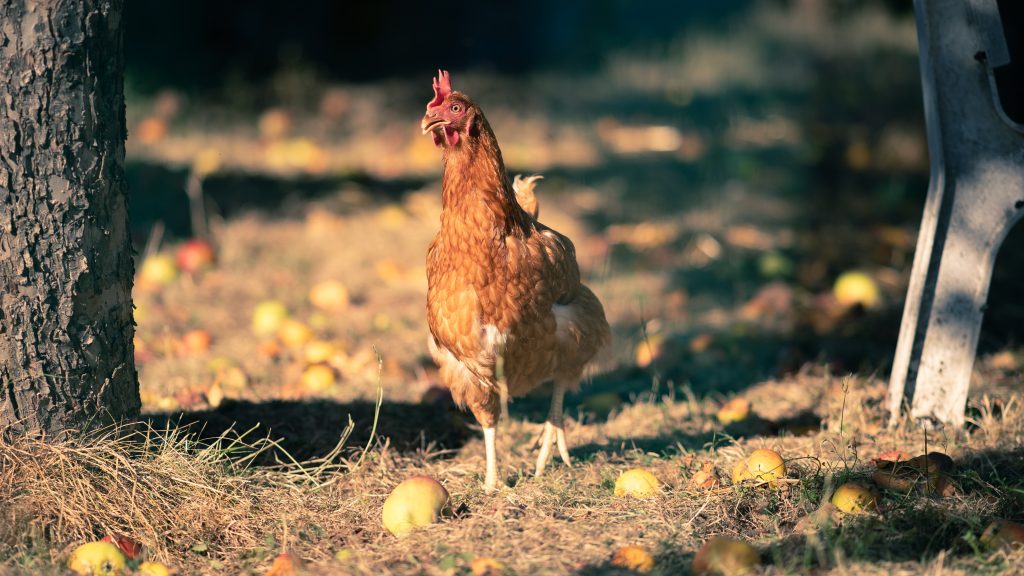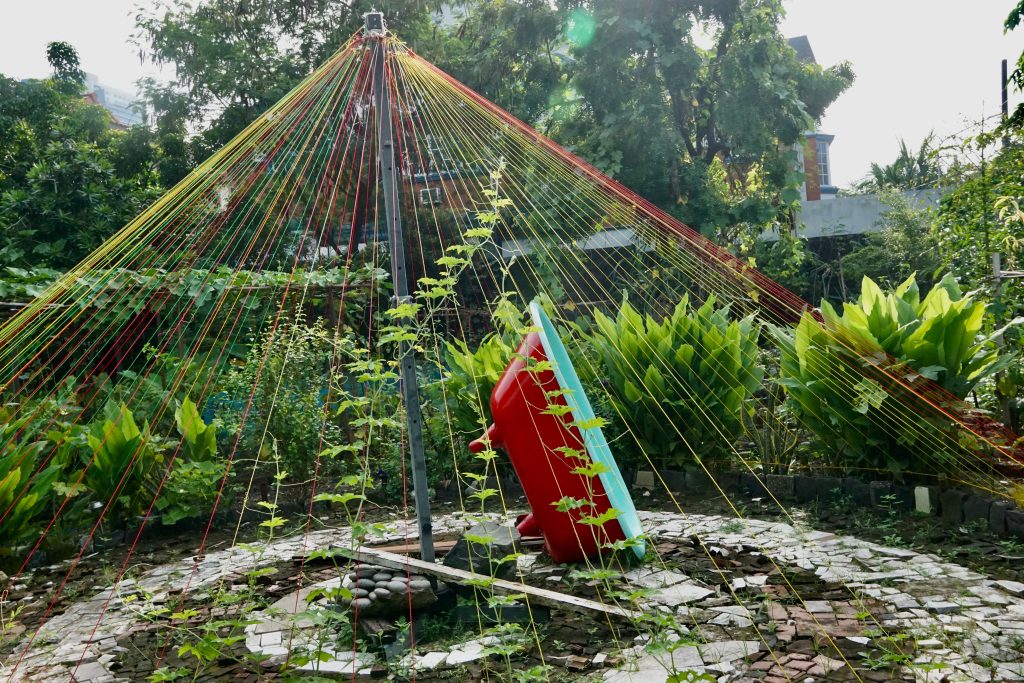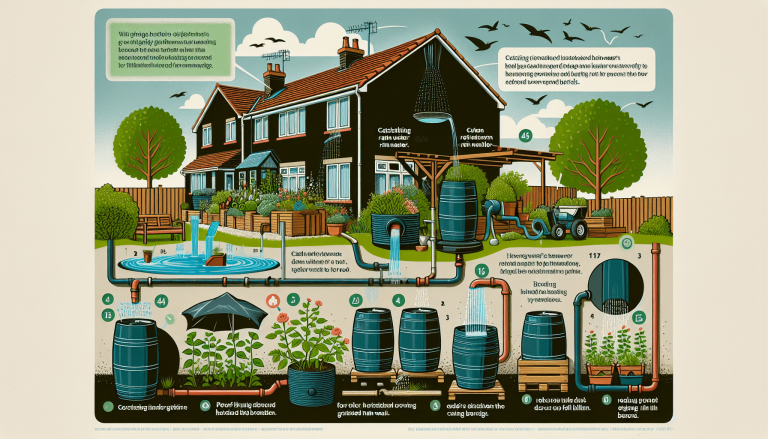If you’re looking to create a sustainable and thriving garden, incorporating permaculture principles is the way to go. By applying these principles, you can transform your garden into a self-sufficient ecosystem that not only yields an abundance of fresh produce but also contributes to the overall health of the environment. Whether you’re a seasoned gardener or just starting out, this article will provide you with practical advice on how to incorporate permaculture principles into your own garden, allowing you to cultivate a space that is not only beautiful but also in harmony with nature.
Table of Contents
ToggleDesigning Your Garden for Permaculture
When designing your garden for permaculture, it is important to start by assessing your site. Take a careful look at the characteristics of your garden, such as the topography, soil type, sunlight exposure, and existing vegetation. This will help you understand the unique features and limitations of your garden, and provide a foundation for your permaculture design.
Once you have assessed your site, the next step is to create zones within your garden. Zoning is an important permaculture principle that allows you to organize your garden based on the frequency of use and plant requirements. For example, Zone 1 should be the area closest to your house, where you can grow high-maintenance plants, such as herbs and salad greens, that require frequent attention. Zone 2 can be dedicated to larger plants, such as fruit trees and shrubs, that require less attention. Zone 3 can be for perennial vegetables and Zone 4 for pasture or natural areas. This zoning system will help you optimize your garden layout and make it more efficient to manage.
Another way to incorporate permaculture principles into your garden is by using edible landscaping. Edible landscaping combines the beauty of ornamental plants with the functionality of growing food. Instead of a traditional front lawn, consider planting fruit trees, berry bushes, and edible flowers that not only provide food for you, but also attract beneficial pollinators and wildlife to your garden. Additionally, incorporating edible plants into your flowerbeds and borders can add an interesting and diverse element to your garden design.
Building Healthy Soil
Building and maintaining healthy soil is essential for the long-term success of your garden. One permaculture practice that promotes healthy soil is composting. Composting involves the decomposition of organic materials, such as kitchen scraps, yard waste, and plant trimmings, into nutrient-rich compost. By adding compost to your garden beds, you can improve soil structure, fertility, and water retention, while reducing the need for synthetic fertilizers and chemical inputs.
Mulching is another effective technique for building healthy soil in a permaculture garden. Mulching involves covering the soil surface with organic materials, such as straw, leaves, or wood chips. This layer of mulch helps to retain moisture, regulate soil temperature, suppress weed growth, and improve soil structure as it breaks down over time. Additionally, mulch provides a habitat for beneficial organisms, such as earthworms, that contribute to soil health.
When building healthy soil in a permaculture garden, it is important to avoid synthetic fertilizers. Synthetic fertilizers can have negative environmental impacts and can disrupt the natural balance of nutrients in the soil. Instead, focus on building fertility through natural and organic means, such as composting, mulching, and incorporating cover crops. These practices will help to create a sustainable and self-sufficient garden ecosystem.
Conserving Water
Conserving water is a critical aspect of permaculture gardening, especially in regions with limited water resources or during times of drought. There are several techniques you can use to conserve water in your garden.
Collecting rainwater is a simple yet effective way to conserve water. Installing rain barrels or large cisterns can help you capture and store rainwater, which can then be used to irrigate your garden during dry periods. By harvesting rainwater, you can reduce your reliance on municipal water sources and make your garden more self-sufficient.
Another water conservation technique is installing drip irrigation. Drip irrigation allows for precise and efficient watering, delivering water directly to the roots of plants, minimizing evaporation and water waste. Compared to traditional sprinkler systems, drip irrigation can save significant amounts of water while ensuring that your plants receive the moisture they need.
Choosing drought-tolerant plants is also important for water conservation. Native plants and species adapted to your local climate naturally require less water, as they are adapted to the conditions of your region. By selecting plants that are well-suited to your climate, you can reduce the amount of water needed to maintain your garden while still enjoying a beautiful and productive landscape.
Attracting Beneficial Wildlife
Incorporating beneficial wildlife into your garden is an essential permaculture practice. By attracting and supporting native species, you can create a balanced ecosystem that helps control pests and pollinates your plants. There are several ways to attract beneficial wildlife to your garden.
One way is by planting native species. Native plants provide food, shelter, and nesting sites for local wildlife, such as birds, butterflies, and beneficial insects. By including a variety of native plants in your garden, you can create a diverse and supportive habitat for beneficial wildlife.
Creating wildlife habitats is another effective method. This can include providing nesting boxes, bird feeders, and insect hotels. These features offer additional resources for wildlife, encouraging them to take up residence in your garden and contribute to its ecological balance.
Providing water sources is also important for attracting beneficial wildlife. Consider adding a birdbath, a small pond, or even a shallow dish with water to meet the water needs of birds, bees, and other animals. Having a reliable water source will make your garden more appealing and inviting to wildlife.
Integrating Companion Planting
Companion planting is a permaculture technique that involves planting different plants together to create mutually beneficial relationships. By understanding plant relationships, you can maximize productivity, repel pests, and improve soil fertility in your garden.
One popular example of companion planting is the Three Sisters planting method. This ancient Native American technique involves planting corn, beans, and squash together. The corn provides a trellis for the beans to climb, while the beans fix nitrogen in the soil, benefiting the corn and squash. The squash acts as a living mulch, shading the soil and reducing weed growth.
Another way to integrate companion planting is by interplanting herbs and vegetables. Certain herbs, such as basil, rosemary, and mint, can help deter pests when planted alongside vegetables. For example, planting basil near tomatoes can help repel tomato hornworms and improve the flavor of the tomatoes.
By carefully selecting plant combinations and taking advantage of their mutual benefits, you can create a harmonious and productive garden ecosystem.
Implementing Forest Gardening
Forest gardening is a permaculture approach that seeks to mimic the structure and function of natural forest ecosystems. By imitating the layers found in a forest, you can create a resilient and productive garden that requires minimal inputs and maximizes biodiversity.
In a forest garden, different layers of plants are cultivated. The canopy layer is composed of tall trees, providing shade and creating a microclimate beneath. Underneath the canopy, there is the understory layer, consisting of smaller trees, shrubs, and fruit-bearing perennials. Next is the herbaceous layer, which includes ground covers, herbaceous perennials, and self-seeding annuals. Lastly, the root layer comprises root crops and ground-hugging plants that stabilize the soil and improve its structure.
Creating food forest guilds is another important aspect of implementing forest gardening. Guilds are a combination of plants that work together to support each other’s growth and provide a range of functions. For example, a guild might include a fruit tree as the central element, with beneficial herbs planted around its base, and ground covers that help retain moisture and suppress weeds. By carefully selecting the plants in your guilds, you can create a self-sustaining and productive ecosystem in your garden.
Using Organic Pest Control
Controlling pests in a natural and sustainable way is an important principle of permaculture gardening. Rather than relying on chemical pesticides, permaculturists focus on encouraging natural predators and implementing companion planting strategies.
One effective method of organic pest control is to encourage predatory insects. These beneficial insects, such as ladybugs, lacewings, and hoverflies, feed on garden pests like aphids, mites, and caterpillars. By providing them with habitat, such as flowering plants and insect hotels, you can create an environment that attracts and supports these beneficial predators.
Companion planting also plays a role in organic pest control. Some plants have natural pest-repelling properties when planted alongside susceptible crops. For example, planting marigolds around your vegetable garden can help deter nematodes and other soil-borne pests.
Additionally, there are natural pest deterrents that you can use to protect your plants. For example, garlic and chili pepper sprays can be effective against aphids and other soft-bodied insects. Neem oil is another common organic pest control option, acting as a mild insecticide and fungicide.
By using organic pest control methods, you can maintain a healthy balance in your garden, protecting your plants from pests while minimizing harm to the environment and beneficial organisms.
Reducing Waste through Recycling and Reusing
Permaculture emphasizes sustainability and minimizing waste, and this extends to your garden practices. By incorporating recycling and reusing techniques, you can reduce your ecological footprint and contribute to a more sustainable garden ecosystem.
Creating a compost system is an effective way to recycle organic materials from your garden and kitchen. Composting allows you to turn food scraps, yard waste, and even paper products into nutrient-rich compost that can be used to enrich your soil. By diverting these materials from the landfill and transforming them into valuable resources, you are reducing waste and closing the loop in the garden ecosystem.
Using organic materials for mulching is another way to reduce waste. Instead of buying synthetic mulch or using materials that will end up in the landfill, consider using grass clippings, leaves, or wood chips from tree prunings as mulch in your garden. Not only does this reduce waste, but it also nourishes the soil as the organic material breaks down and provides a habitat for beneficial organisms.
Repurposing household items is another way to reduce waste in your garden. For example, you can repurpose old containers or buckets as planters, use wine bottles to create a DIY drip irrigation system, or turn broken terra cotta pots into unique garden decorations. By finding creative uses for items that would otherwise be thrown away, you can add a personal touch to your garden while promoting sustainability.
Practicing Crop Rotation
Crop rotation is an important practice in permaculture gardening that helps maintain soil health and prevent the buildup of pests and diseases. By rotating crops, you can minimize nutrient depletion, control weeds, and break pest and disease cycles.
Understanding the benefits of crop rotation is key to its successful implementation. Different plants have different nutrient requirements, and by rotating crops, you can ensure that the soil remains balanced and fertile. Additionally, certain crops are more susceptible to specific pests and diseases. By rotating crops, you can disrupt the life cycle of these pests and reduce the risk of outbreaks.
Developing a crop rotation plan is essential. Divide your garden into different areas or beds and assign different plant families or groups to each area. Rotate crops within these areas on a yearly or seasonal basis, ensuring that plants from the same family are not grown in the same area for consecutive seasons. Cover crops can also be incorporated into your rotation plan to further improve soil fertility and reduce weed growth.
By practicing crop rotation, you can maintain healthy soil, reduce pest and disease pressure, and maximize the productivity of your garden.
Continuously Learning and Adapting
Permaculture is a dynamic and evolving practice, and it is important to continuously learn and adapt in order to improve your garden over time.
Attending permaculture workshops and courses is a great way to expand your knowledge and gain practical skills. These workshops often cover various permaculture techniques and principles, providing you with a deeper understanding of how to apply them in your own garden. Additionally, you can connect with like-minded individuals and exchange ideas and experiences.
Joining gardening communities, whether online or locally, is another valuable resource. These communities provide a platform for sharing knowledge, asking questions, and seeking advice from experienced gardeners. By engaging with others who share your passion for permaculture, you can learn from their successes and challenges and further enhance your own garden practices.
Experimenting and documenting your results is a crucial part of learning and adapting in permaculture gardening. Keep a garden journal and record your observations, successes, and failures. Experiment with new techniques, plant combinations, or varieties of plants to see what works best in your garden. Through this process of experimentation and documentation, you can refine your practices and make informed decisions to improve the productivity and sustainability of your garden.
Incorporating permaculture principles into your garden is a journey that requires patience, observation, and a willingness to adapt. By designing your garden with permaculture in mind, building healthy soil, conserving water, attracting beneficial wildlife, integrating companion planting, implementing forest gardening, using organic pest control, reducing waste, practicing crop rotation, and continuously learning and adapting, you can create a vibrant and sustainable garden that provides abundant harvests, supports wildlife, and respects the natural environment. Embrace the principles of permaculture and enjoy the rewards of a truly ecological garden.









